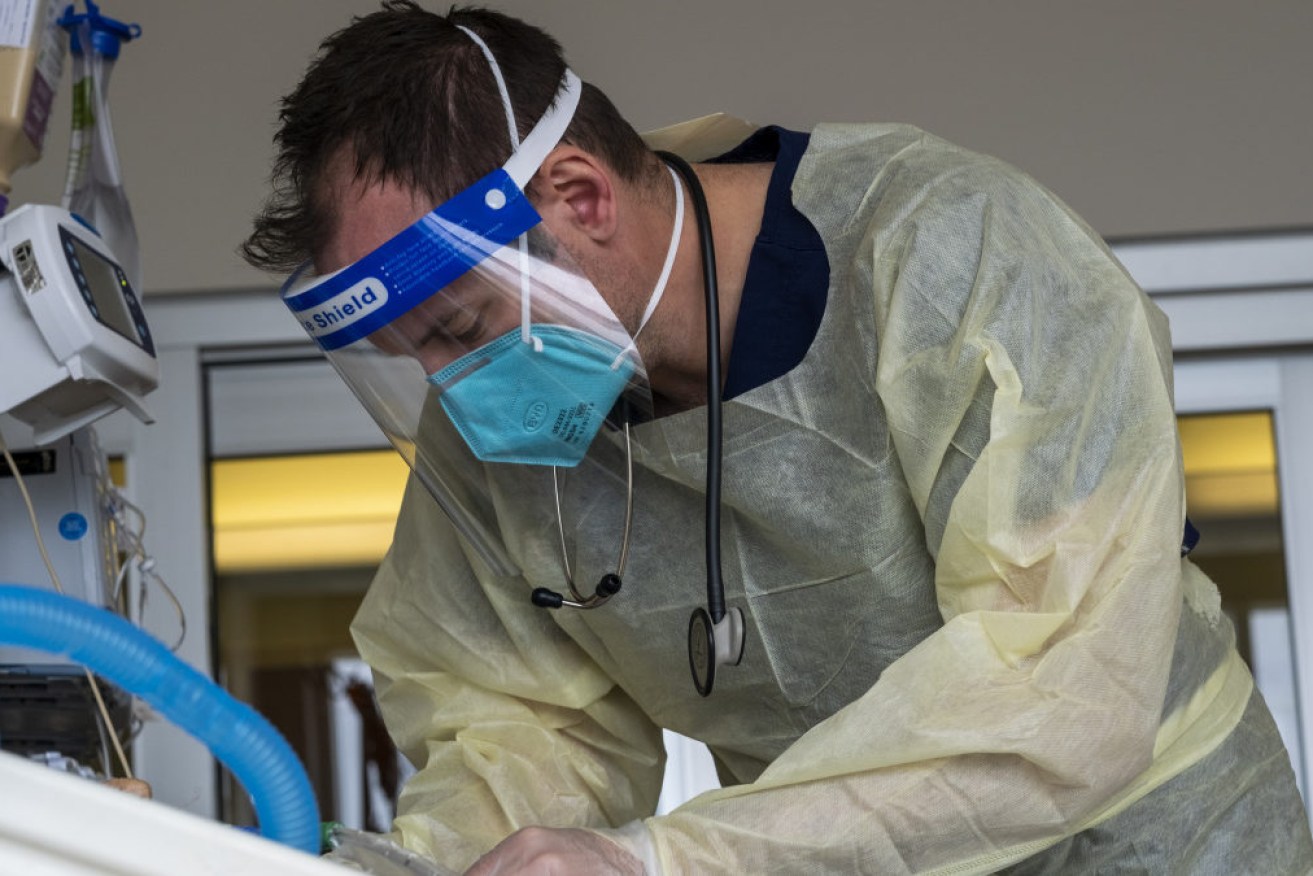Health system on the brink, doctors warn, as federal government defends COVID preparation


Hospital staff are bracing for an onslaught of COVID cases. Photo: Getty
The federal government has insisted hospitals are ready for COVID-19 cases to rise when Australia opens up, but doctors have warned the health system is already on the brink.
It comes as one of Australia’s leading epidemiologists warned Melbourne is just five weeks behind Sydney’s case numbers and needs to urgently vaccinate the population if it wants to take the pressure off hospitals.
On Friday, federal Health Department secretary Brendan Murphy briefed national cabinet on the capacity of state and territory health systems, as hospitals prepare to be swamped by coronavirus cases.
Prime Minister Scott Morrison has refused to reveal what has been shared between the New South Wales and federal governments about expected COVID caseloads, which modelling shows could surpass 20,000 a day in the coming weeks.
Nurses working in intensive care units in Sydney have told The New Daily they are already struggling and are terrified of what is to come in the next weeks.
“There is absolutely a lot of fear in the air … it’s almost palpable,” one ICU nurse told TND on Friday.
But speaking to a Senate inquiry, Professor Murphy tried to offset concerns that NSW’s health system is not equipped to handle the expected onslaught of cases.
“They’ve certainly assured us that they believe they have sufficient critical care and bed capacity to meet the anticipated peak which they would see as being in a few weeks, as vaccination takes effect,” he said.
Professor Murphy said the nation’s hospitals would be ready for easing of restrictions once vaccination rates hit 70 and 80 per cent.
“Our plan for living with COVID does not depend on using private hospitals and closing elective surgery,” he told the Senate committee.
“Specifically, we’re working with states and territories to work on a plan where we can live with low-level COVID and continue elective surgery and continue to provide general health care.”
A hospital system stressed and anxious
But the Australian Medical Association has warned that hospitals are ill-prepared for reopening, with emergency departments swamped and elective surgery waiting times too long even before the pandemic.
AMA vice-president Chris Moy said it was useless to focus on ICU beds and ventilators – firstly because they wouldn’t operate themselves and, secondly, because it would be the whole health system that was impacted by rising COVID-19 cases.
“The health system isn’t just ICU units, for every COVID case in ICU you’ll have one in the wards,” Dr Moy told TND.
In many states without COVID outbreaks there are chronic issues, he said, including staff shortages, under-funding and unprecedented demand on the system were already creating a shortage of beds and a backlog of patients. .
“WA, Queensland and SA are all full up and we don’t even have COVID,” Dr Moy said.
“We need to do a ‘stress test’. Develop plans and fund these things properly so we don’t have to deny normal care.”
The AMA is calling for new modelling looking at the health system’s capacity to guide opening-up plans.
Aiming for a higher vaccination rate than 80 per cent of the adult population before reopening is likely required to avoid repeated lockdowns, given the existing constraints on hospital capacity and staffing, Dr Moy said.
“Otherwise, we’ll be displacing care into the future and that means life or death decisions,” he said.
Melbourne’s grim prospects
Professor Catherine Bennett, chair of epidemiology at Deakin University, said Melbourne was in “a race” to get vaccinated before the infectious Delta strain swamped hospitals.
“Melbourne’s case numbers are probably five or six weeks behind Sydney’s,” Professor Bennett said.
“As soon as you get over 200, there’s a 25 per cent increase in cases every four days. That’s the challenge. We’re starting to get to the pointy end.”
Professor Bennett said the impact of Sydney’s supercharged vaccine rollout would soon be seen in the case numbers and reflected in the reproduction rate of the virus.
The reproduction rate of the coronavirus, or R0 (pronounced ‘R nought’), is a figure that shows the average number of people a single individual will infect with COVID-19.
If NSW’s vaccine push “flattens the R0 in the next two to three weeks, that gives us a bit of an idea of what vaccine coverage we need to get to.”
Professor Bennett said getting vaccinated as quickly as possible was the only way to avoid catastrophic case numbers.
“It’ll save us going into crisis mode,” she said.








